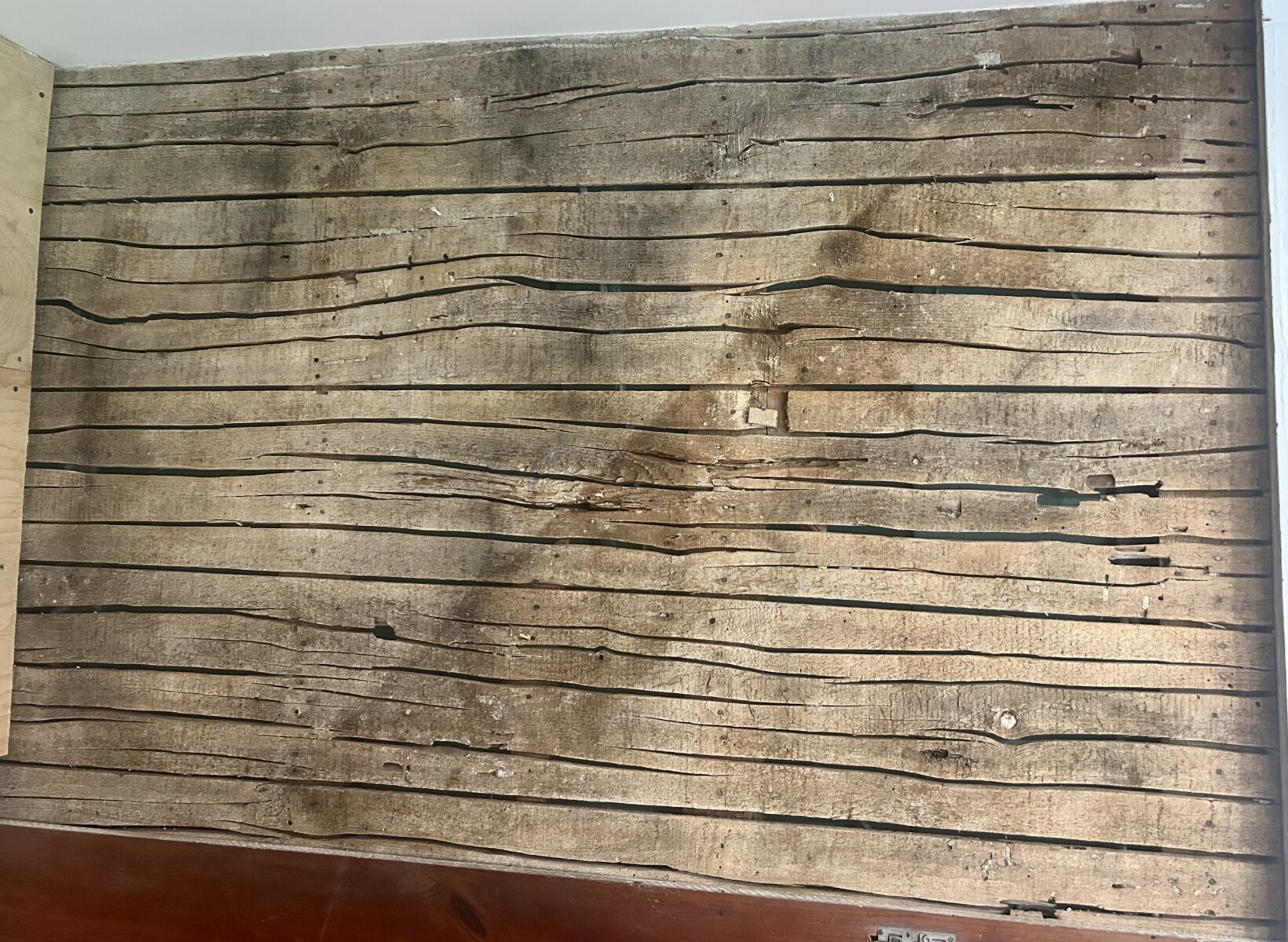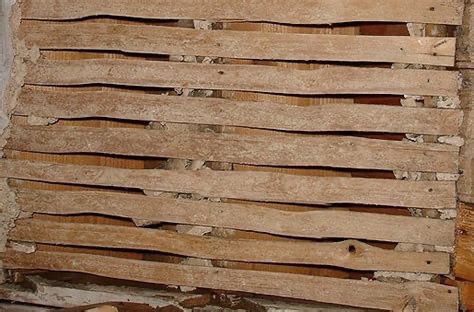The use of wood lath in plastering has a long and significant history in building construction, particularly before the widespread use of drywall.
Gregoire Plastering does extensive patching work with wooden lathing in older homes and commercial or historical buildings. In older homes and historical buildings, wood lath is the hidden framework that allows plaster to grip, flex, and endure. We specialize in repairing, replacing, and integrating wood lathing in a way that honors the original construction and gives your surfaces a lasting foundation.

Types of Lathing:
Accordion Lathing
Accordion lath, sometimes referred to as expanded or machine-cut lath, was a later innovation designed to speed installation. Instead of hand-cut strips, it is manufactured with pre-expanded openings that create a textured surface for plaster to grip. This method allows for quicker installation and consistent spacing, while still providing a secure base for plaster layers. Accordion lathing is often found in mid-century buildings and restoration projects where efficiency and structural reliability were both priorities.



Timber, Sawn and Riven Lathing
Traditional wood lath was often cut from timber in narrow strips, either sawn by machine or hand-split (riven) along the grain. Riven lath, in particular, has extra strength and flexibility because the wood fibers remain intact, making it highly durable and less prone to splitting. These strips are nailed across wall studs or ceiling joists with small gaps between them, allowing plaster to “key” into place. When preserved or repaired correctly, timber, sawn, and riven lath provides a strong, lasting foundation that supports the authenticity and charm of older plaster systems.



Our Lathing work


What Is Wood Lathing — And Why It Matters
Wood lath (or lathing) refers to the thin strips of wood nailed or fastened to studs or joists, creating a surface for plaster to adhere to. Before drywall became dominant, it was the standard substrate for walls and ceilings.
Over time, wood lath can fail due to:
- Corrosion or failure of fasteners
- Warping, shrinkage, or wood rot
- Structural movement or settling
- Previous poor patching or mismatched repairs
- Gaps or loss of adhesion between plaster and lath
When lath fails, plaster loses its grip, leading to hollows, bulges, cracks, or detached plaster.
FAQs
No — once plaster is applied, the lath is fully hidden. Our work is completely behind the scenes.
We generally favor restoring or repairing original lath. Converting to drywall changes the building’s breathability, appearance, and historic integrity. But in certain modern additions, we can advise on hybrid approaches.
It depends on how widespread damage is. Often just sections (a few boards) need intervention—not entire walls.
Because of the specialized nature of lath work (precision cutting, matching historic materials, labor intensity), it may carry premium pricing — but it ensures longevity and structural integrity, avoiding repeated plaster failures.
Yes. Controlling humidity, avoiding persistent leaks, and minimizing large structural shifts in the building are vital. We can suggest preventive measures to reduce future lath deterioration.
Ready to restore or repair the hidden framework that makes your plaster last?
Let’s talk about your building’s lath system and plan a repair that honors tradition and delivers durability.
